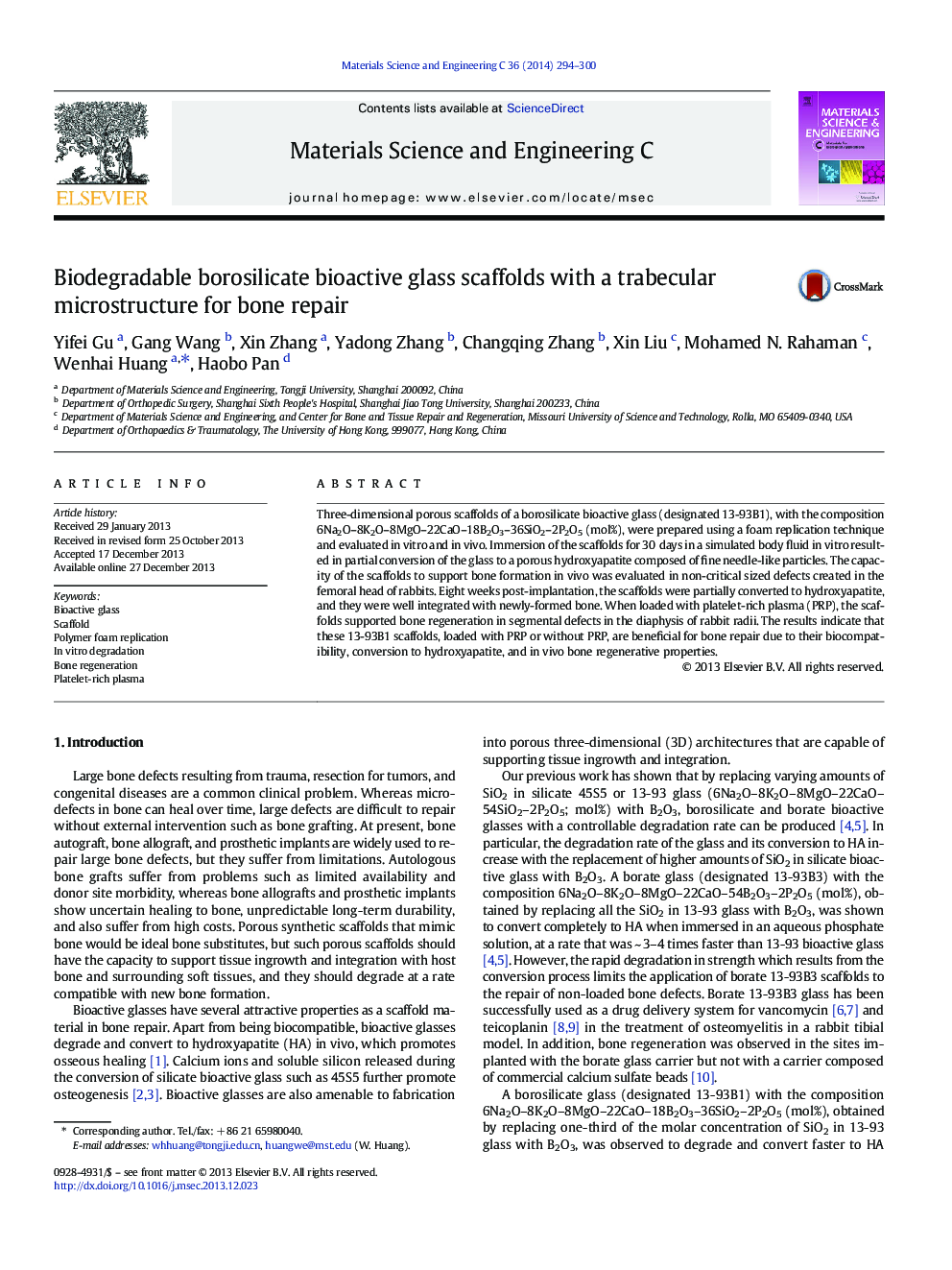| Article ID | Journal | Published Year | Pages | File Type |
|---|---|---|---|---|
| 1429249 | Materials Science and Engineering: C | 2014 | 7 Pages |
•Trabecular borosilicate bioactive glass scaffold was prepared.•We examine its biodegradability in vitro and bone healing ability in vivo.•Bioactive glass scaffold was partially converted to HA-like material immersed in SBF.•New bone formation was observed and integrated with the conversed scaffold.•Bioactive glass scaffold enhanced bone formation in combination with growth factors.
Three-dimensional porous scaffolds of a borosilicate bioactive glass (designated 13-93B1), with the composition 6Na2O–8K2O–8MgO–22CaO–18B2O3–36SiO2–2P2O5 (mol%), were prepared using a foam replication technique and evaluated in vitro and in vivo. Immersion of the scaffolds for 30 days in a simulated body fluid in vitro resulted in partial conversion of the glass to a porous hydroxyapatite composed of fine needle-like particles. The capacity of the scaffolds to support bone formation in vivo was evaluated in non-critical sized defects created in the femoral head of rabbits. Eight weeks post-implantation, the scaffolds were partially converted to hydroxyapatite, and they were well integrated with newly-formed bone. When loaded with platelet-rich plasma (PRP), the scaffolds supported bone regeneration in segmental defects in the diaphysis of rabbit radii. The results indicate that these 13-93B1 scaffolds, loaded with PRP or without PRP, are beneficial for bone repair due to their biocompatibility, conversion to hydroxyapatite, and in vivo bone regenerative properties.
